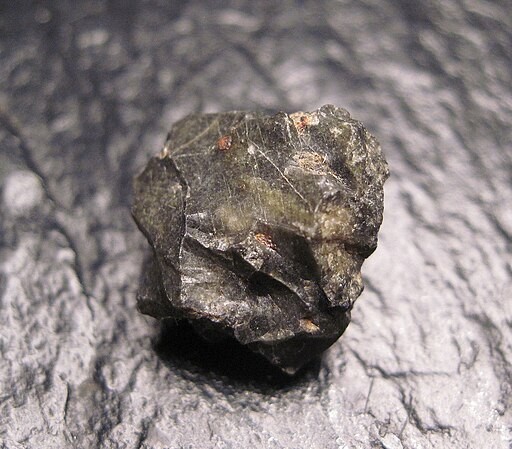On June 27, 1931, the city of Tatahouine in Tunisia watched in awe as a fireball exploded in the sky, raining down hundreds of meteorite fragments. After several years, the city became a major filming location of the Star Wars movie series.
Star Wars Meteorite
Both the desert climate and the traditional villages in Tatahouine became a huge inspiration to film director George Lucas. He even named the fictional home planet of Luke Skywalker and Darth Vader "Tatooine".
The 1931 meteorite was classified as a rate type of achondrite called diogenite. Named after the Greek philosopher Diogenes, diogenites are igneous meteorites or space rocks which have solidified from lava or magma. They formed at depth within an asteroid and slowly cooled, resulting in the formation of large crystals.
Tatahouine contains crystals as big as 5 millimeters with black shock-induced impact melt veins. They were formed as a result of high temperatures and pressures from projectile smashing into the surface of the rock's parent body.
The presence of these veins and the structure of pyroxene grains suggest that the rock sample has experienced pressures of up to 25 gigapascals (GPa). For comparison, the pressure at the bottom of the Mariana Trench, the deepest known point on Earth's surface, is only 0.1 GPa. This means that the Tatahouine meteorite has experienced an extremely strong impact.
A Violent Past
In a recent study, experts have obtained important insights into the origin of Tatahouine and the early Solar System. Led by F. Jourdan, the research team evaluated the spectrum of the meteorite sample and compared it to asteroids and planets in the Solar System.
The result of the investigation suggests that diogenites, including Tatahouine, originate from 4 Vesta, the second largest body in the asteroid belt. Most of the meteorites from asteroid 4 Vesta have been existing for around 4 billion years. Therefore, they provide a window to the past events of the early Solar System which we are not able to evaluate here on Earth.
The study involves analysis of 18 diogenites, all from asteroid 4 Vesta. The ages of the meteorites were determined using radiometric argon-argon age dating technique. A certain argon isotope in the samples was known to increase with age at a particular rate. Scientists can use this information to estimate an age of a sample by comparing the ratio between two different isotopes.
Aside from this, the team evaluated deformation caused by collision, also known as impact events. This was done using a type of electron microscope technique called electron backscatter diffraction.
By combining the microscope technique and the age dating techniques, the researchers were able to map the timing of impact events on asteroid 4 Vesta and the early Solar System. It was assumed that 4 Vesta experienced impact events until 3.4 billion years ago when a catastrophic one took place.
Such an event, possibly another colliding asteroid, resulted in multiple smaller rubble pile asteroids called vestoids. Understanding large scale impact events like this can unlock the hostile nature of the early Solar System.
These smaller fragments experienced further collisions which caused material to hurtle to our planet over the last 50 to 60 million years, including the one that happened in Tunisia. Ultimately, this work demonstrates the importance of analyzing meteorites and their impacts in the evolution of asteroids in the Solar System.
RELATED ARTICLE: Evidence of Water Flows Found on Vesta
Check out more news and information on Vesta in Science Times.















